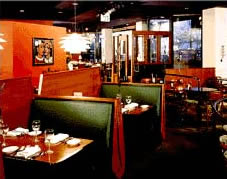Perfection in Pleasure

It’s no surprise these gems are imported by Louis/Dressner, who comments on their web site about Brun’s wines, ” Brun’s view is that Beaujolais drinks best at a lower degree of alcohol and that there is no need to systematically add sugar to the must (chaptalize) to reach alcohol levels of 12 to 13 degrees. So he chaptalizes minimally or not at all — depending on the vintage and the cuvée. His Beaujolais is made to be pleasurable — light, fruity and delicious — not an artificially inflated wine that shines at tasting competitions. Only a minimal amount of S02 is used at bottling to keep the wine fresh and “headache-free”. Fermentation naturally produces a lot of CO2, which acts as protection against oxidation during aging; leaving some in the wine at bottling time also helps to keep it fresh. Filtration is also minimal so that the wine keeps its original fruit and aromas. Brun’s wines are not ‘blockbusters’ in the sense of ‘big.’ The emphasis is not on weight, but on fruit: Beaujolais as it once was and as it should be.”
I have never tasted a wine from Brun that was not delicious and in the excellent 2005 vintage he has reached new heights. While Brun’s Beaujolais à l’Ancienne seems readily available in many markets, his Cru wines are not. If you want them I’d quickly check out Chambers Street Wines as they seem to have most of the few bottles available.
The first thing that these wines have in common is that they are absolutely alive. Not just lively, which they are, but alive. While most wines lie dead in the bottle waiting to be consumed, Brun’s wine seem coiled like a spring in the bottle waiting for the experience of your palate to complete the winemaking process. Next is a brilliant, ruby purple color that seems to radiate out of your glass. Then there is their purity. There is just something about these wines that that communicates the purity of the process that brought them to your table. You’ll not taste cleaner wines.
Brun’s 2005 Beaujolais releases:
- Beaujolais à l’Ancienne - this has been my house wine of choice for several years now. Always perfectly balanced and mouthwatering, I can think of few wines that can bring alive such a broad range of foods. You’ll need to buy this by the case as you’ll find yourself grabbing for a bottle again and again. While always delicious, this wine has reached new heights in pure pleasure in 2005. While drinkable now, it will certainly keep for a few years.
- Fleurie - a high strung, delicate flower of a wine. Electric and racy with a graceful swirl of wildflowers and spice.
- Morgon - Richer and rounder, but no less alive. Deeply zesty black fruits open into minerals, spice and lilting wisps of cassis. Weightless power.
- Moulin-a-Vent - The biggest, most powerful delicate wine I’ve ever tasted. With some kind of sleight of hand, this wine teases the palate with a richness that refuses to be heavy handed. A brilliant wine with amazing complexity and a balance that should inspire all winemakers.











